
The paper “Fault Rocks and Fault Mechanisms” by R. H. Sibson (1977), was one of the first studies that established major connections between the rocks that form in faults, and their conditions and mechanics during formation at crustal scale. Concretely, Sibson (1977) established: 1.) links among the textures and lithologies that develop along fault zones (fault rocks), 2.) the rheological and crustal conditions of fault rock formation, and 3.) the mechanical modes of shear failure along active crustal-scale fault zones. Considering that the topics addressed extend across multiple fields in structural geology and geomechanics, the article can be a challenging read for those that are least familiar with these disciplines. We present below a summary of the article.
Louderback (1942) documented the early discussions on the association of earthquakes with faulting. Field observations and petrological studies of the Moine Thrust by Nicol (1861), Lapworth (1885), and Teall (1918) had revealed the presence of distinct foliated rocks termed “mylonites” defining the fault zone. Also, Scholz et al. (1969) had earlier demonstrated that faults accommodate shear displacements (failure) either through intermittent seismic failure (unstable fault slip accompanied by earthquake rupture) or aseismic fault creep (stable fault slip without the release of strong seismic radiation). Scholz et al. (1972) had also shown that, in certain conditions, stable slip can degenerate into seismic failure. Sibson himself had earlier discussed the elastic strain energy budget of active fault zones which is manifested in the accrual and subsequent release of the energy during failure (Sibson, 1974). “Fault Rocks and Fault Mechanisms” ties all these different components of faulting into a coherent model of crustal fault zones.
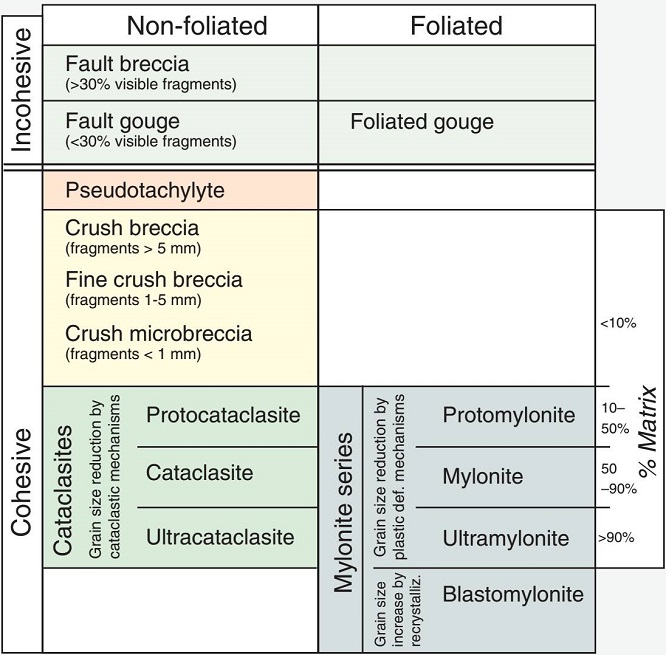
Fig. 1. Sibson’s fault classification of fault rocks (credit: http://www.alexstrekeisen.it/meta/cataclasite.php).
In this important contribution, the article first presents a broad textural classification of fault rocks. It later uses the surface exposures of exhumed brittle and ductile structures along the Moine Thrust Zone to discuss the classes of fault rocks that are likely to have developed at shallow (upper crust) and deeper (mid to lower crust) crustal depth conditions. Sibson’s classification of fault rocks included groups of incohesive, cohesive, foliated, and non-foliated fault rocks (Figures 1 and 2).
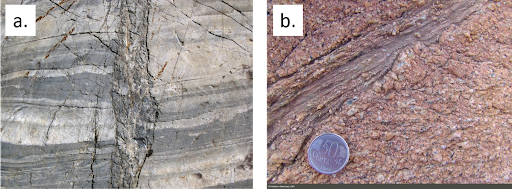
Fig. 2. Photographs of (a) fault breccia in interbedded metagraywacke-slate (brittle fault zone), and (b) ultramylonites (ductile shear zone) in deformed granite (Roberto Weinberg; source: https://users.monash.edu.au/~weinberg/Pages/teixeira_tendo/teixeira_tendo.htm).
An analysis of the relationships between the style of fault failure (reverse, normal, and strike-slip), slip rate, and energy expended during fault failure is then presented. Sibson argues that a distinct fault rock texture develops along the fault surface depending on the velocity of fault slip, which allow distinction of rocks formed seismically or aseismically. For example, the relatively high slip velocities associated with seismic failure often result in temperature and/or fluid pressure perturbations of the fault zone. The study also relates the localization of shear deformation and seismic failure to the concentration of earthquakes along plate boundaries, thereby supporting the ‘theory’ of plate tectonics (Sykes & Sbar, 1973). Further, the study discussed the variation of temperature, confining pressure, and fluid pressure with crustal depths, and the implications for the rheology and mechanics of shear failure of the crust at those depth ranges.
The study concludes by presenting a unifying model of crustal faults. The model suggests that in the brittle upper crust, faults will often fail seismically following an elasto-frictional mechanical path, leading to the development of fault rocks with gouge and cataclasite textures. In the instances of dry fault blocks, the resulting fault rocks could develop frictional melt materials (pseudotachylytes). In contrast, in the ductile lower crust, faults will commonly fail aseismically following a quasi-plastic mechanical path, and mylonite and blastomylonite textures will dominate among the resultant fault rocks. However, transient phases of seismic shear failure can occur in the regime of quasi-plastic deformation which explains the occurrence of earthquakes in the lower crust. In this case, brittle failure fault rocks locally overprint the ductile shear fabrics, although this effect is not always preserved due to the post-seismic progression of ductile deformation. Finally, the study demonstrated that the zone of transition between these two regimes (EF/QP transition) in the continental crust can be estimated to be 10 – 15 km depth, or 250–350 °C (based on an ‘average’ geothermal gradient of 20 – 30 °C/km). This is the depth at which the frictional resistance to shear failure, or shear strength, of the crust is greatest.
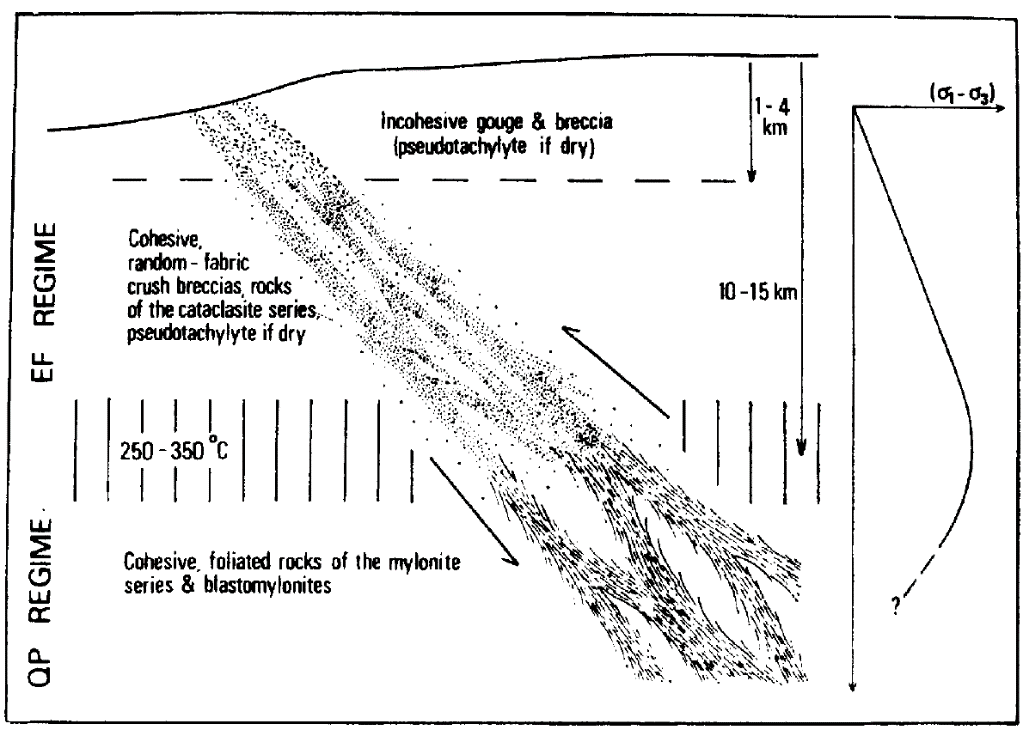
Fig. 3. Conceptual Model of crustal-scale fault zone (Sibson, 1977).

Fig. 4. A colorful 3-D cartoon rendering of Sibson’s model by A. Da Mommio (http://www.alexstrekeisen.it/english/meta/cataclasite.php)
Over the past decades, Sibson (1977) has inspired numerous research efforts investigating the mechanics of earthquake localization, and aseismic failure leading to destructive earthquake events. Norris & Toy (2014) recently presented an excellent review of crustal-scale fault zones. On the occurrence of frictional melt fault rocks at <4km depth highlighted by Sibson (1977), the occurrence of mid-upper crust pseudotachylytes have been proposed (for example Warr et al., 2007). Also, pseudotachylytes are common in landslides (known as “frictionite”) but rare (not impossible) in the top 5 km of crust from tectonic earthquakes. In addition to these studies, Coffey et al. (2019) demonstrated the estimation of slip magnitude that would produce a frictional melt rock for a given slipping zone thickness, shear stress, and rock type. Among the findings in Norris & Toy (2014), notable advancements on Sibson (1977)’s fault zone model are the identification of disproportional accommodation of strain at distinct fault zone compartments, and the dependence of downward propagation of fault failure on the upper crustal behavior.
We initiated a brief discussion of Sibson (1977) on Reddit and twitter, and Dr. Christie Rowe and Dr. Jack Williams responded with insightful comments on the twitter post.
Written by Folarin Kolawole, David Fernández-Blanco, and Marta Marchegiano with the TS-must read group.
References
Coffey, G. L., Savage, H. M., Polissar, P. J., Rowe, C. D., and Rabinowitz, H. S., 2019. Hot on the trail: Coseismic heating on a localized structure along the Muddy Mountain fault, Nevada. Journal of Structural Geology, 120, pp.67-79.
Lapworth, C., 1885. The Highland controversy in British geology: its causes, course and consequences. Nature, 32(832), pp.558-559.
Louderback, G. D., 1942. Faults and earthquakes. Bulletin of the Seismological Society of America, 32(4), pp.305-330.
Nicol, J., 1861. On the structure of the North-western Highlands and the relations of the gneiss, red sandstone and quartzite of Sutherland and Ross-shire. Quarterly Journal of the Geological Society, London, 17, 85-113.
Norris, R. J., and Toy, V. G., 2014. Continental transforms: A view from the Alpine Fault. Journal of Structural Geology, 64, pp.3-31.
Scholz, C. H., Wyss, M., and Smith, S. W., 1969. Seismic and aseismic slip on the San Andreas fault. Journal of geophysical research, 74(8), pp.2049-2069.
Scholz, C., Molnar, P., and Johnson, T., 1972. Detailed studies of frictional sliding of granite and implications for the earthquake mechanism. Journal of geophysical research, 77(32), pp.6392-6406.
Sibson, R. H., 1977. Fault rocks and fault mechanisms. Journal of the Geological Society, 133(3), pp.191-213.
Sykes, L. R., and Sbar, M. L., 1973. Intraplate earthquakes, lithospheric stresses and the driving mechanism of plate tectonics. Nature, 245(5424), pp.298-302.Sykes, L.R. and Sbar, M.L., 1973. Intraplate earthquakes, lithospheric stresses and the driving mechanism of plate tectonics. Nature, 245(5424), pp.298-302.
Teall, J. H. H., 1918. Dynamic metamorphism; a review, mainly personal. Proc. Geol. Assoc. 29, 1-15.
Warr, L.N., Van Der Pluijm, B.A. and Tourscher, S., 2007. The age and depth of exhumed friction melts along the Alpine fault, New Zealand. Geology, 35(7), pp.603-606.


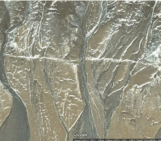
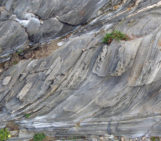
Tiago #faultfriday
Excellent.
Many thanks,